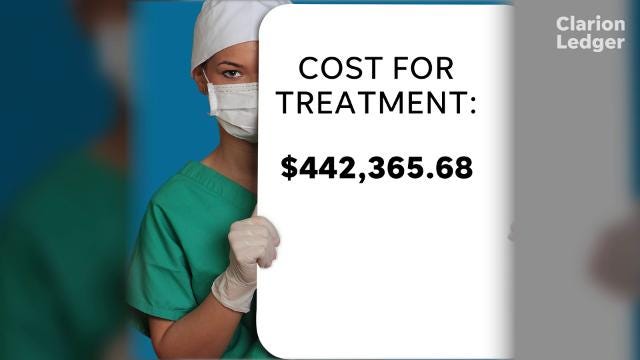
It is a smart idea to seek out skilled nursing facilities for care, especially if your condition is serious. A 24-hour nursing staff can help you ensure you receive the best care possible. It's also a comfort knowing that someone is there to look after you. But what are the different types of nursing care available?
There are two main types of nursing care available: inpatient, and outpatient. Inpatient care includes 24-hour care at a facility. Outpatient is usually limited to about two visits per week. Many patients will move between these levels as their condition worsens.

A patient may need more intensive treatment if they have a chronic condition. Skilled nursing facilities provide 24-hour nursing services including personal and rehabilitation services. If a patient is unable or unwilling to take care of herself, a skilled nursing facility could be the right option. But if you are looking for a little extra help, you may want to consider getting care at home. There are many options for receiving care at home, including home health care. This type of care can help you maintain a healthy lifestyle while allowing you to keep your home and live as independently as possible.
There are, however, less intensive care options. Custodial services are one example. Custodial assistance is a daily task that involves helping with dressing, bathing, and toileting. While this care does not require skilled nursing, it can still be helpful for someone with a severe medical condition. It's also a good idea to have this type of care if you have a loved one with a serious medical condition. It can also provide a sense of security for you and your family.
Other than general inpatient and custodial care, subacute care as well as routine care are available. Subacute healthcare is a lower level of acute care. But it's a great step up from past routine care. Subacute care may require more intensive therapy and physician services. It may also include intensive multidisciplinary therapy. It's also one form of nursing care that is less intensive.
It is absurd to believe that routine care for the aforementioned does not exist. People tend to think that routine care refers to the care provided at home. However, this is a misleading term as routine care visits often include a visit from the nurse. You might also receive regular tests, pain control and medication management. You may spend the whole time receiving routine care depending on your needs. Alternate home care can also be an option. It is less intensive but may offer the same level of care.

Perhaps you have even heard of hospice. This type of care focuses on pain management and other therapeutic services, as well as spiritual counseling.
FAQ
What should I know about immunizations?
Immunization is the process that stimulates the immune response to a vaccination. The body produces antibodies (immunoglobulins), to protect itself against infection after receiving the vaccine.
What impact will it have on the healthcare industry if there is no Medicare
Medicare is an entitlement that provides financial help to low-income persons and families who cannot pay their premiums. This program is used by more than 40 Million Americans.
Millions of Americans could lose coverage without this program because private insurers wouldn't offer policies to people with preexisting conditions.
What is the difference of public health and health policies?
In this context, both terms refer to the decisions made by policymakers or legislators to create policies that affect how we deliver health services. A decision to build or renovate a hospital could be taken locally, regionally, and nationally. The same goes for the decision whether to require employers provide health insurance. This can be done by local, national or regional officials.
Statistics
- The health share of the Gross domestic product (GDP) is expected to continue its upward trend, reaching 19.9 percent of GDP by 2025. (en.wikipedia.org)
- Over the first twenty-five years of this transformation, government contributions to healthcare expenditures have dropped from 36% to 15%, with the burden of managing this decrease falling largely on patients. (en.wikipedia.org)
- Foreign investment in hospitals—up to 70% ownership- has been encouraged as an incentive for privatization. (en.wikipedia.org)
- Consuming over 10 percent of [3] (en.wikipedia.org)
- About 14 percent of Americans have chronic kidney disease. (rasmussen.edu)
External Links
How To
What is the Healthcare Industry Value Chain
The healthcare industry value chains include all the activities involved with providing healthcare services. This includes the operations of hospitals and clinics as a whole, and the supply chain that connects them to other providers. The end result is a continuum of care that begins with diagnosis and ends with discharge.
The value chain is composed of four main components:
-
Business Processes - These consist of the tasks performed by individuals throughout the entire process of delivering health care. For example, a doctor may perform an exam and then prescribe medication. Each step along the way must be completed efficiently and accurately.
-
Supply Chains - All the organizations involved in making sure that the right supplies reach the right people at the right time. A typical hospital has many suppliers. They include pharmacies as well lab testing facilities, imaging center, and even janitorial employees.
-
Networked Organisations - This is a way to coordinate all the entities. Hospitals are often composed of many departments. Each department will have its own set office and telephone number. The central point will allow employees to get up-to-date information from any department.
-
Information Technology Systems (IT) - IT is essential in order for business processes to run smoothly. It is essential to ensure that business processes run smoothly. Without IT, everything would be a mess. IT also allows you to integrate new technologies in the system. Doctors can connect to a secure network connection in order to integrate electronic medical records into their workflow.